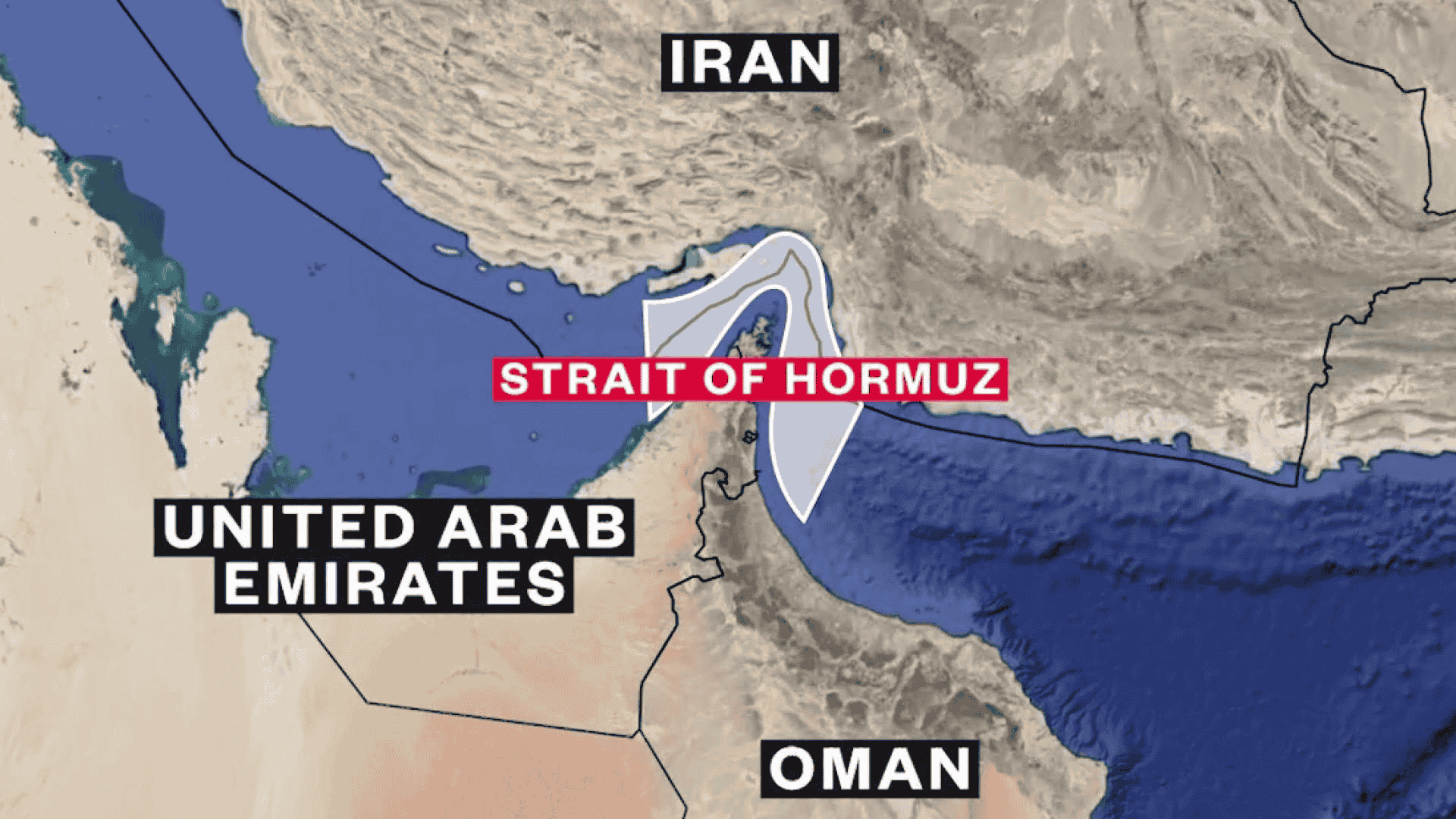The recent Israel-Iran conflict and subsequent ceasefire in June 2025 have once again brought the strategic importance of the Strait of Hormuz into global focus. This narrow maritime passage, often called the world’s most important oil chokepoint, plays a crucial role in global energy security and is extremely important for competitive exam aspirants preparing for international relations and geography.
What is the Strait of Hormuz?
The Strait of Hormuz is a narrow maritime route located between Iran to the north and Oman and the United Arab Emirates to the south. At its narrowest point, it is only 33 kilometers (20 miles) wide, with a shipping lane of just about 3 kilometers. This strait connects the Persian Gulf with the Gulf of Oman and the Arabian Sea and is the only sea route for oil tankers from Gulf countries to reach global markets.
Strategically, Iran controls seven out of the eight major islands in this region, giving it significant influence over regional navigation. Additionally, Iran has strengthened its military presence by establishing naval bases in coastal areas like Chabahar, Bandar Abbas, and Bushehr.
Impact on Global Energy Security
Oil and Gas Transit Data
About 20% of global petroleum liquids (approximately 20 million barrels per day) pass through the Strait of Hormuz daily. According to the US Energy Information Administration, this route handles around $600 billion worth of energy trade annually. One-third of the world’s liquefied natural gas (LNG) also passes through this route.
Major oil-producing countries like Saudi Arabia, Iran, Iraq, Kuwait, Qatar, and the UAE depend on this route for exporting their petroleum products. The fact that oil passing through the Strait of Hormuz accounts for more than a quarter of global seaborne oil trade is highly significant.
Alternative Routes and Their Limitations
Some alternative pipeline routes exist, but their capacity is limited. Only Saudi Arabia and the UAE have pipelines that can bypass the Strait of Hormuz. Saudi Aramco’s East-West pipeline can transport 5 million barrels of oil per day, which was temporarily increased to 7 million barrels per day in 2019. Still, these alternatives cannot fully compensate for the large volumes that usually pass through the strait.
Iran’s Strategic Position and Threat Assessment
Iran’s Ability to Block the Strait
Iran has repeatedly threatened to close the Strait of Hormuz during times of tension, but has never actually done so. There are several reasons for this:
Economic Self-Interest: Iran’s own economy depends on oil exports through this route.
Regional Relations: Improving relations with neighboring countries like Saudi Arabia mean Iran does not want to harm them.
Chinese Dependency: China is Iran’s largest oil buyer, and if the route is closed, China’s energy needs would also be affected.
Recent Developments
During the Israel-Iran conflict in June 2025, the US conducted airstrikes on Iran’s Fordo, Natanz, and Isfahan nuclear facilities on June 21, 2025. In response, Iran’s parliament passed a proposal to close the Strait of Hormuz, though the final decision rests with Iran’s Supreme National Security Council. On June 25, 2025, US President Trump announced a ceasefire.
Strategic Importance for India
Dependence on Energy Imports
India’s energy security is highly dependent on this strait:
Crude Oil: About 70% of India’s crude oil imports come through this route.
LNG: Around 40% of LNG imports also pass through this route.
Total Imports: India imports about 2.1 million barrels of crude oil per day via the Strait of Hormuz, which is roughly 39% of its total imports.
Diversification Strategy
India has adopted a strategy to diversify its oil sources:
Russian Oil: In June 2025, over 41% of India’s total oil imports came from Russia, more than from Gulf countries.
Alternative Suppliers: India has increased oil imports from the US, West Africa, and Latin America, reducing dependence on the Strait of Hormuz.
Strategic Reserves: India maintains strategic petroleum reserves to cushion against supply disruptions.
Chabahar Port: India’s Strategic Investment
Port Development Agreement
In May 2024, India and Iran signed a 10-year agreement for the development of Chabahar Port. Indian Ports Global Limited (IPGL) committed to investing about $120 million, with an additional $250 million credit line.
Strategic Importance
Chabahar Port is important for India in several ways:
Bypassing Pakistan: The port connects India directly to Afghanistan and Central Asia, bypassing Pakistan.
International North-South Transport Corridor: Chabahar is a key part of this corridor, linking the Indian Ocean to northern Europe.
Location Advantage: Chabahar is located outside the Persian Gulf, providing direct access to the Arabian Sea and reducing dependence on the Strait of Hormuz.
The port is 550 nautical miles from India’s Kandla port and 786 nautical miles from Mumbai, making it strategically very useful for Indian trade.
Global Economic Impact
Oil Price Volatility
Recent tensions have caused significant spikes in global oil prices. In June 2025, Brent crude prices rose from $69 per barrel to $74 per barrel. If the strait is completely closed, prices could reach $130 per barrel.
Economic Scenarios
According to Oxford Economics, there are three possible scenarios:
Mild Shock (Increased Sanctions): 1% reduction in global oil supply, Brent crude at $75 per barrel
Moderate Shock (Iranian Export Shutdown): 4% reduction in supply, Brent crude at $90 per barrel
Severe Shock (Strait Closure): Brent crude at $130 per barrel, major impact on global GDP
Regional and Global Chokepoints
Apart from the Strait of Hormuz, other important maritime chokepoints are:
Suez Canal and Bab-el-Mandeb Strait: 12% of global maritime trade
Strait of Malacca: 30% of global trade
Panama Canal: 5% of global container trade
All these chokepoints face risks from geography, climate, and politics.
Why is this important for your exam preparation?
The Strait of Hormuz crisis is important for UPSC and other competitive exams for the following reasons:
Geography: It is an excellent example of maritime chokepoints, a key topic in world geography.
International Relations: The Iran-Israel conflict, US intervention, and regional security complexities make this case study very useful.
Economic Geography: The relationship between energy security and economic development, especially for import-dependent countries like India, is frequently asked in exams.
Current Affairs: The events of June 2025 provide contemporary examples for essay writing and general studies.
India-centric Questions: The Chabahar Port agreement and India’s energy security strategy are important in the context of India’s foreign policy and neighborhood relations.






